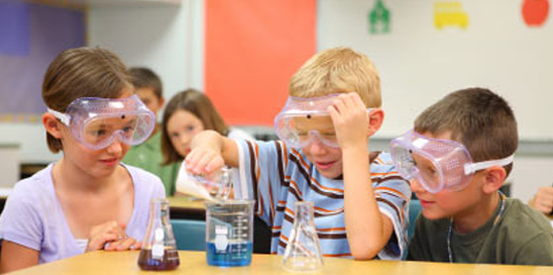
We offer Science Sessions in 4 Tiers
We follow this curriculum and include a hands-on activity in each lesson. Two classes per month are scheduled for each group. We offer to take students to Massachusetts Institute of Technology (MIT) and or other top universities for one class per semester. (Limited seats and subject to eligibility)
Investigate and compare the effectiveness of multiple solutions designed to slow or prevent wind or water from changing the shape of the land.Map the shapes and types of landforms and bodies of water in an area. Examples of types of landforms can include hills, valleys, river banks, and dunes. Examples of water bodies can include streams, ponds, bays, and rivers. Use examples obtained from informational sources to explain that water is found in the ocean, rivers and streams, lakes and ponds, and may be solid or liquid. Observe how blowing wind and flowing water can move Earth materials from one place to another and change the shape of a landform. Examples of types of landforms can include hills, valleys, river banks, and dunes.
Our Science Result
| Program/Competition | Results |
|---|---|
| Feb 2020 | Curious Science student win 3rd place at the State level in the National Chemistry competition. |
| 2019 Science Bee | Curious Science & Learning Students Win 1st place in the local science bee competition |
| 2019 Apr | Curious Science & Learning student win 2nd place at the State level in the National Chemistry competition. |
| 2019 Jan | Curious Science & Learning Students Win 1st place in the"Best Land Survey Engineering" award and 5th place overall from New England in the High Tech City National Competition |
| 2018 Science Bee | Curious Science & Learning Students Win 1st place in the local science bee competition |
| 2018 MCAS NECAP | 100% students receive A score |
| 2018 Science Bee | Curious Science & Learning Students Win 1st place in the local science bee competition |
| 2018 Apr | Curious Science & Learning student win 4th place at the State level in the National Chemistry competition. |
| 2018 Jan | Curious Science & Learning Students Win 1st place in the "Best Transportation Engineering" award and 5th place overall from New England in the High Tech City National Competition |
| 2017 Science Bee | Curious Science & Learning Students Win 1st & 2nd place in the local science bee competition |
| 2017 MCAS NECAP | 100% students receive A & A+ scorer |
| 2017 Apr | Curious Science student placed 4th and 6th place at the State level in the National Chemistry competition. |
| 2017 Jan | Curious Science & Learning Students Win 1st place in the Best Land Survey award, 1st place in the best City Model award and 3rd place overall from New England in the High Tech City National Competition |
| 2016 Science Bee | Curious Science & Learning Students Win 2nd place in the local science bee competition |
| 2016 MCAS NECAP | 100% students receive A & A+ score |
| 2016 Aug | Curious Science Team wins the spot to send Experiment to space through NASA rocket. 22 countries were participated in the competition. |
| 2016 Apr | Curious Science & Learning Students Wins 2nd and 4th Place in the National Chemistry Competition |
| 2016 Jan | Curious Science & Learning Students Wins 5th Place from New England in the High Tech City National Competition |
| 2015 MCAS NECAP | 100% students receive A & A+ score |
| 2015 Aug | Curious Science & Learning Students Wins 3rd Place at the MIT Science Bowl Competition. |
| 2015 Apr | Curious Science & Learning Students Wins 6th Place in the National Chemistry Competition. |
TESTIMONIALS +